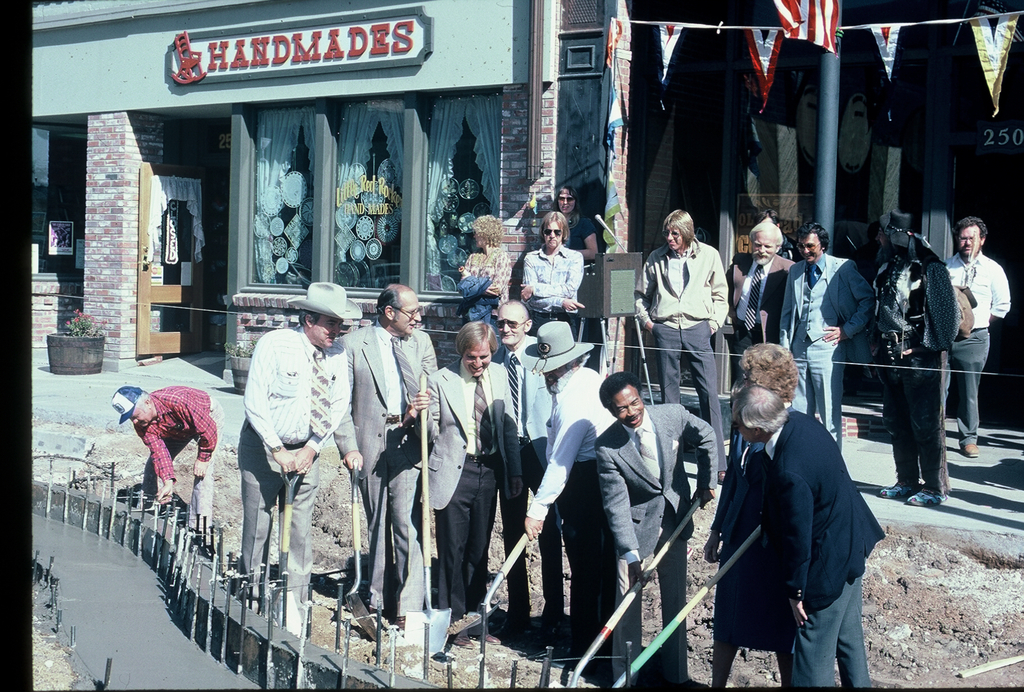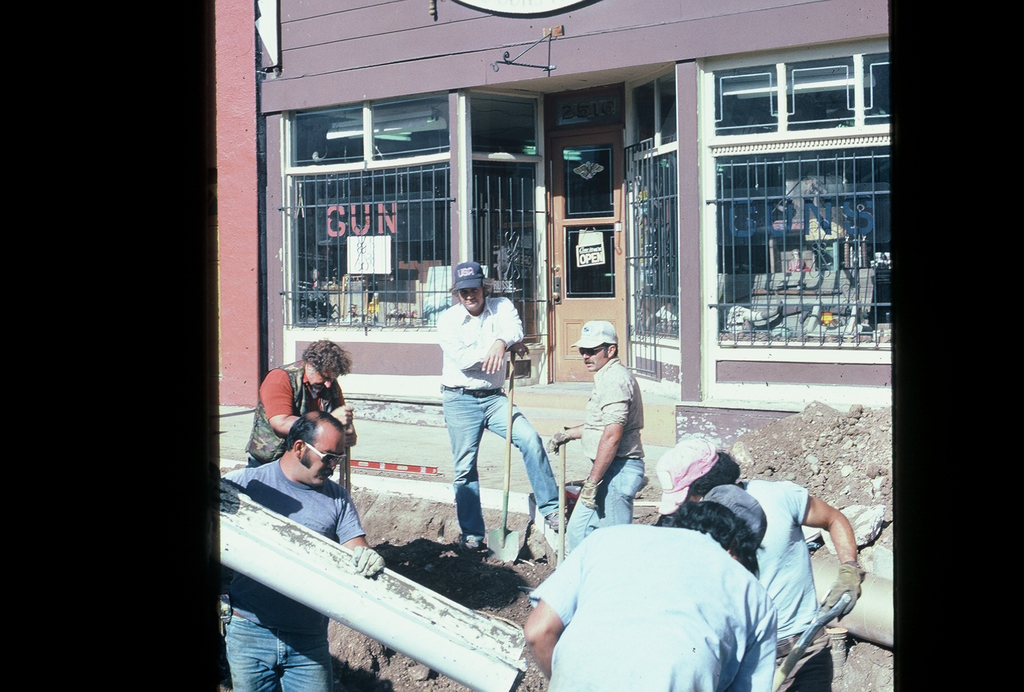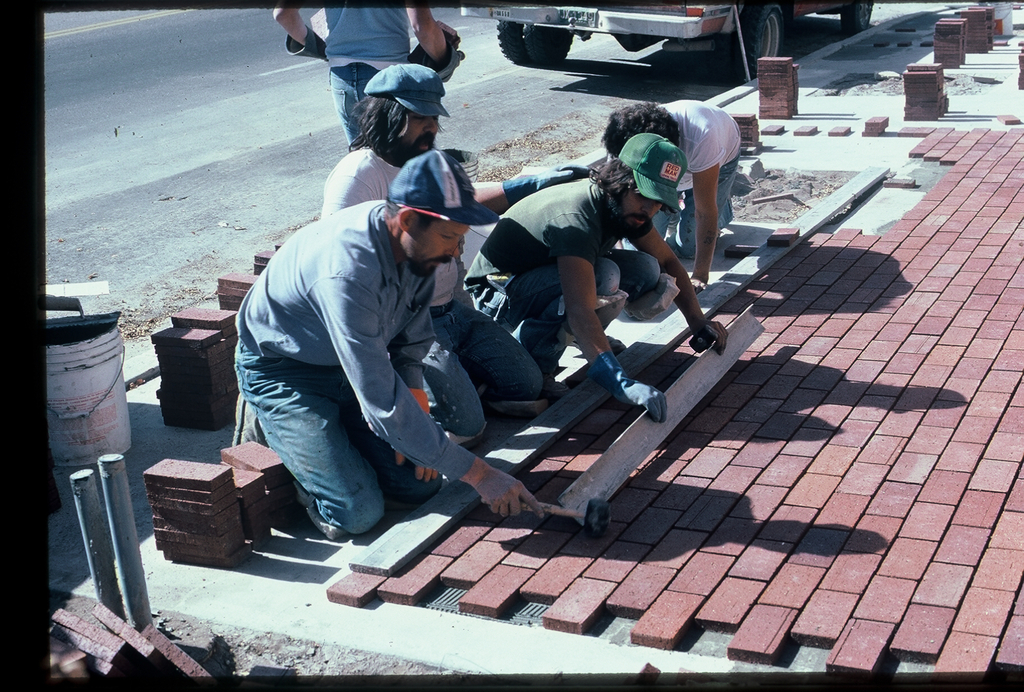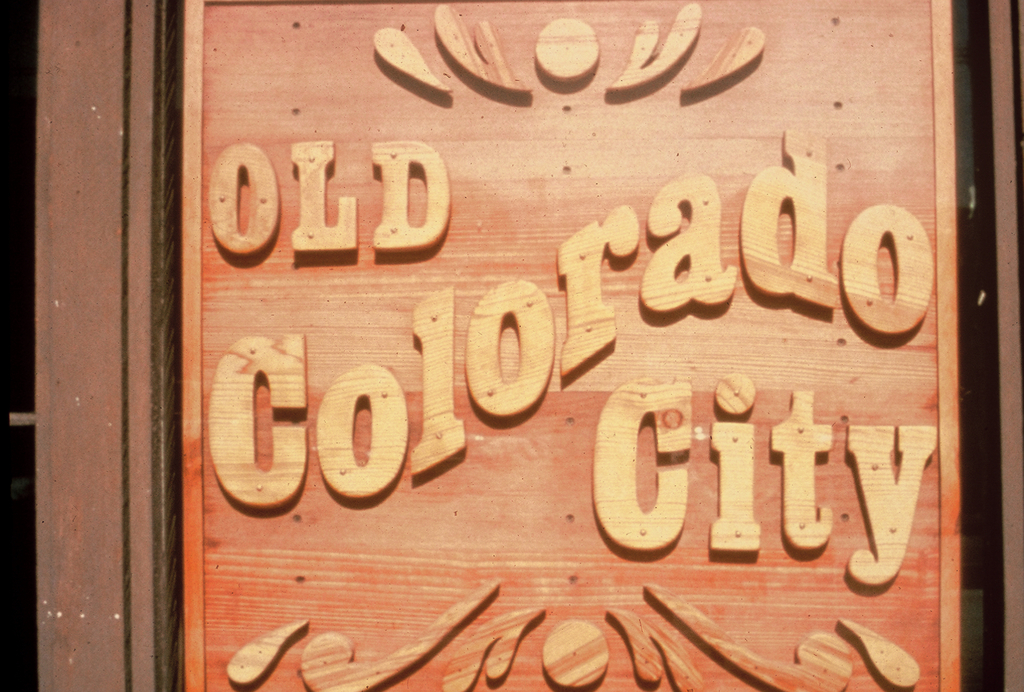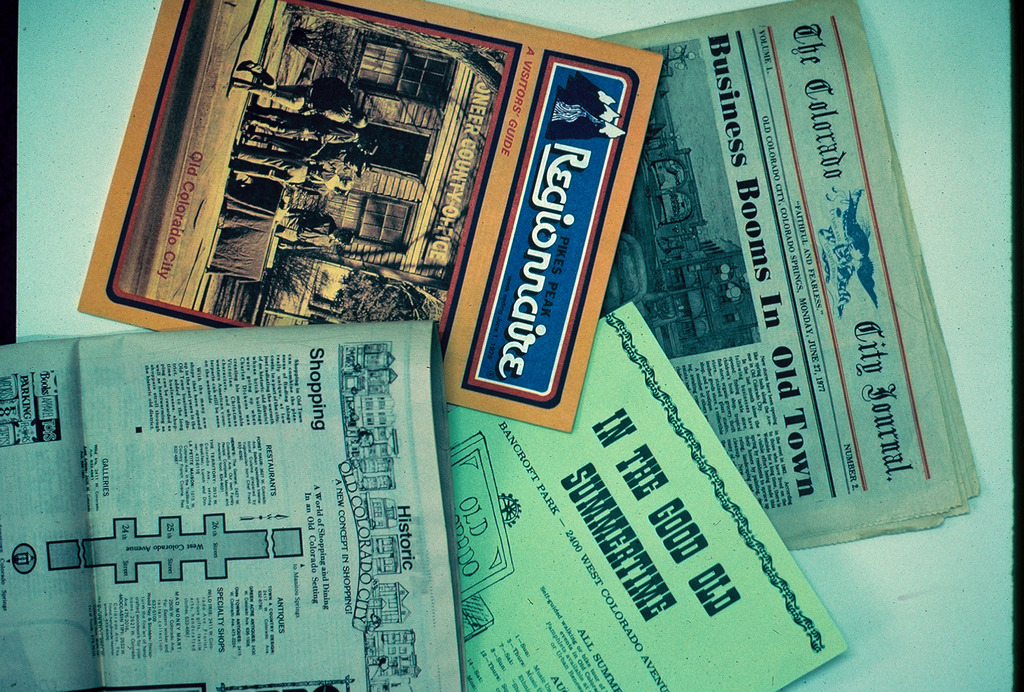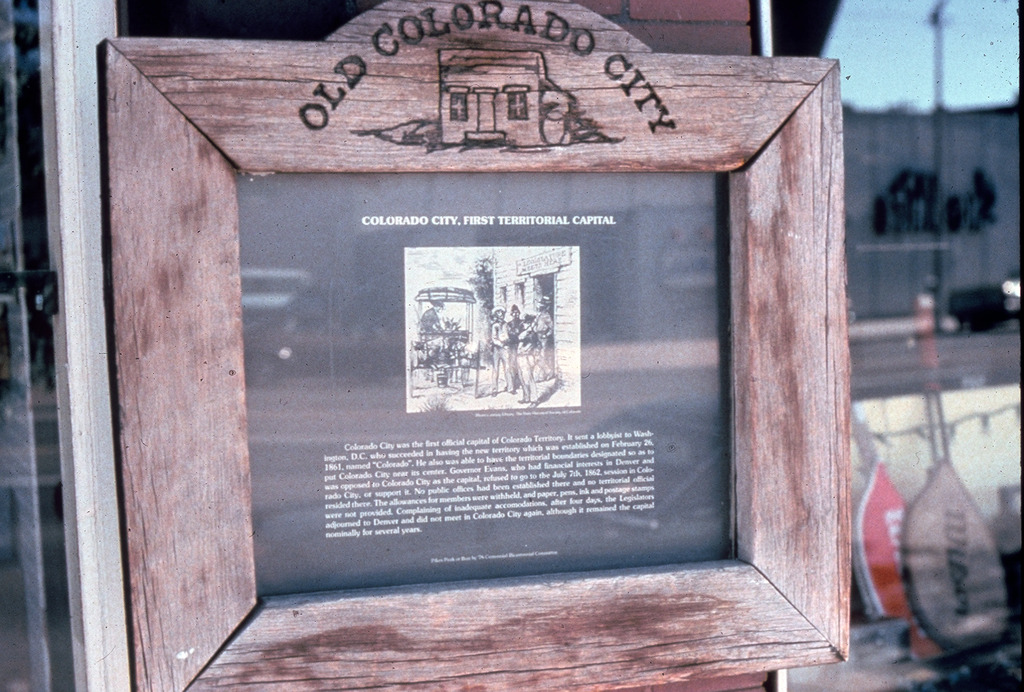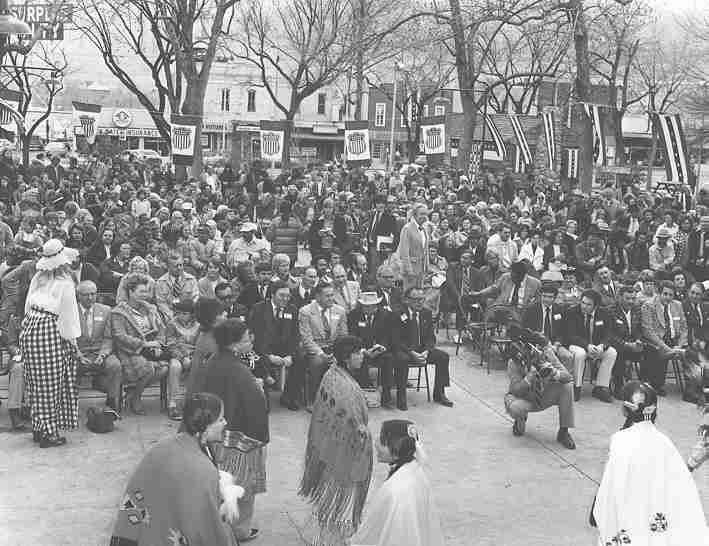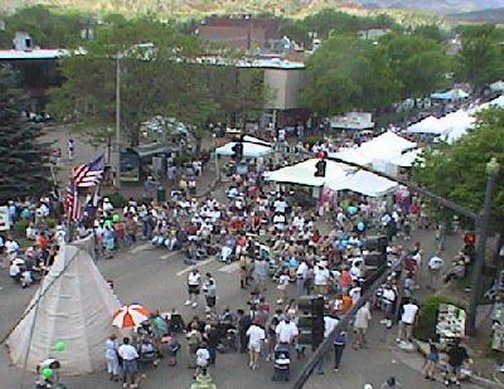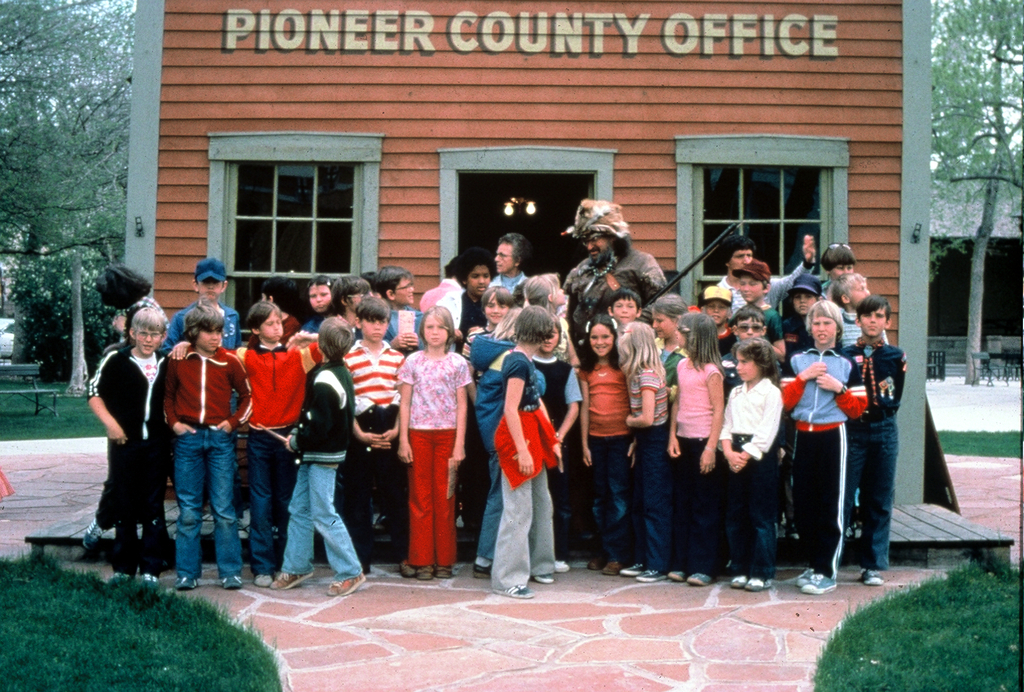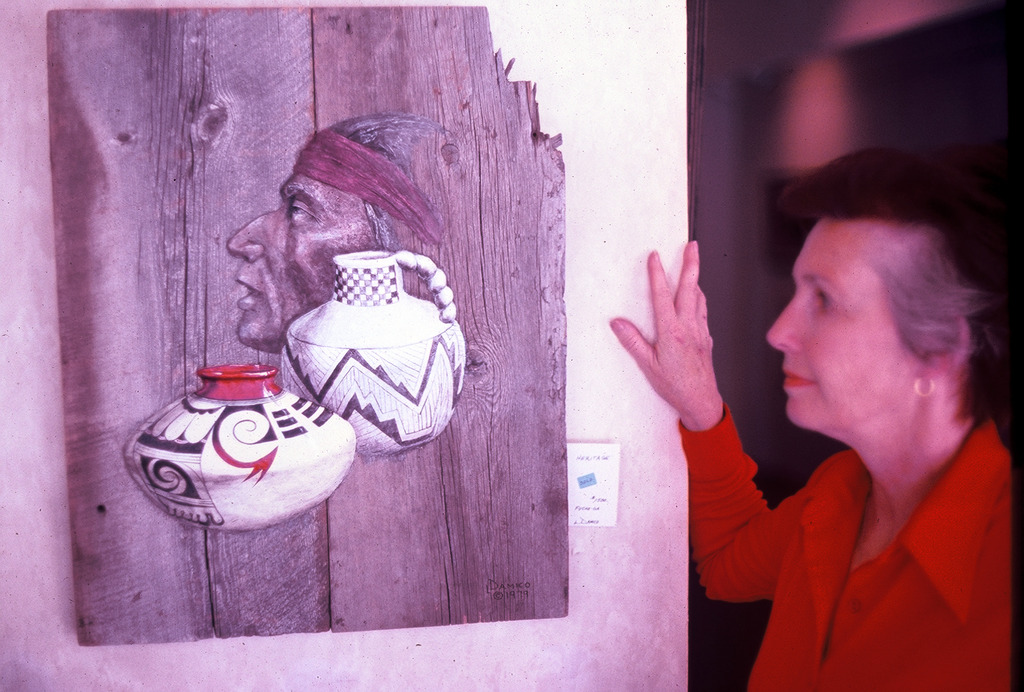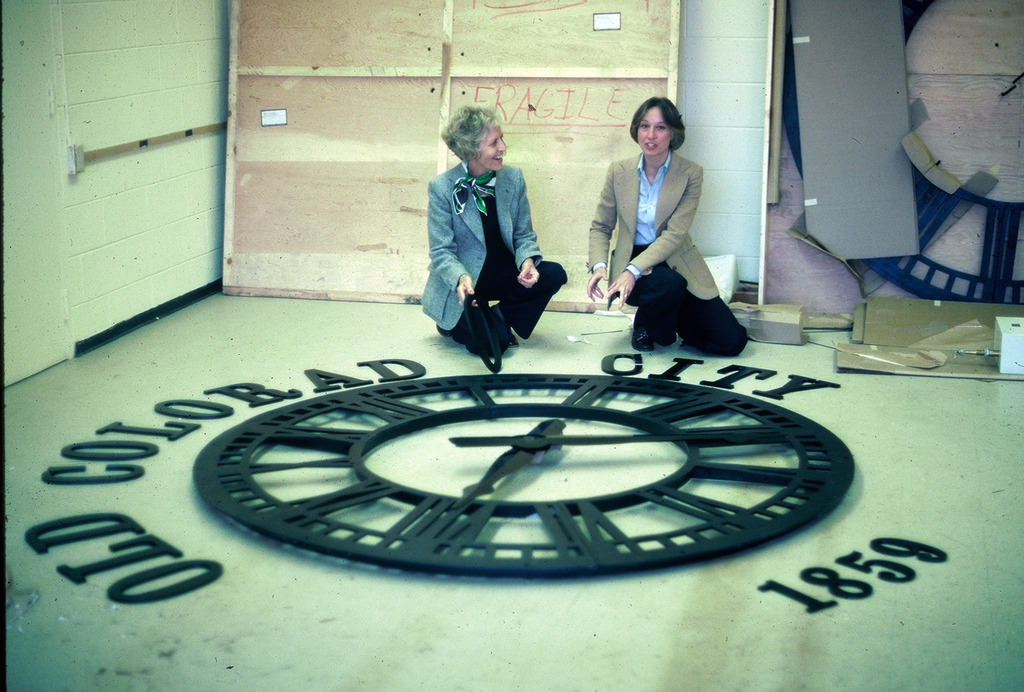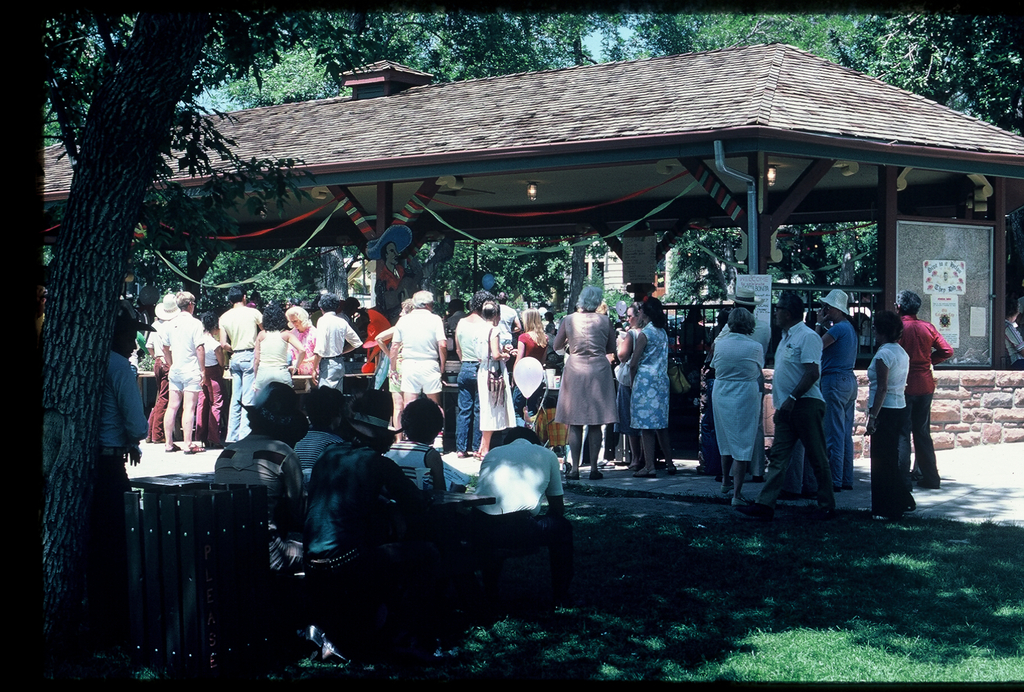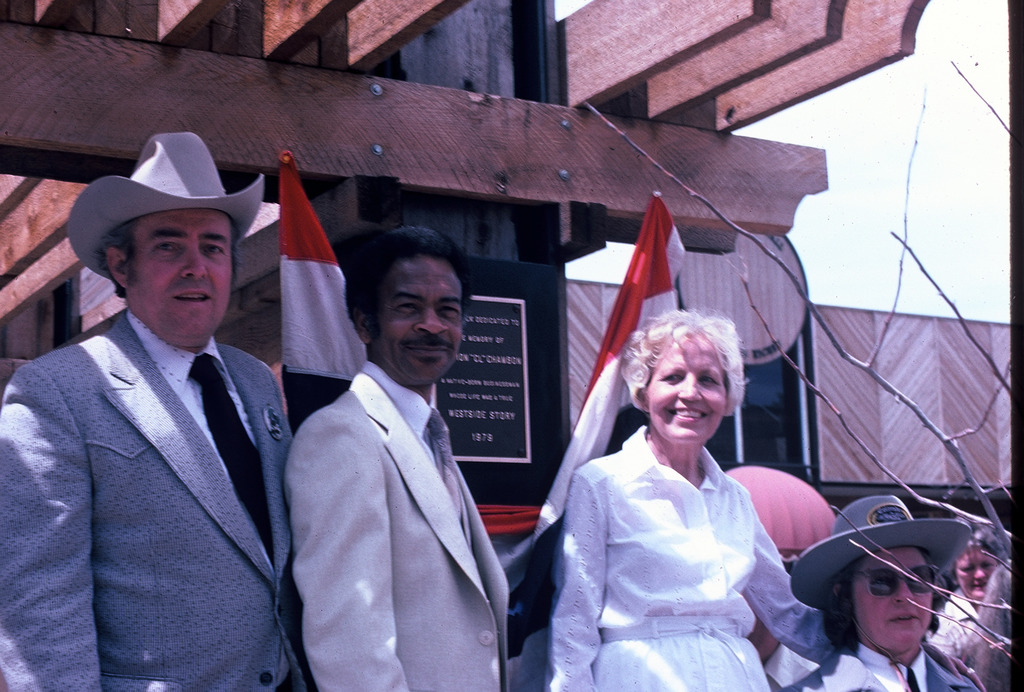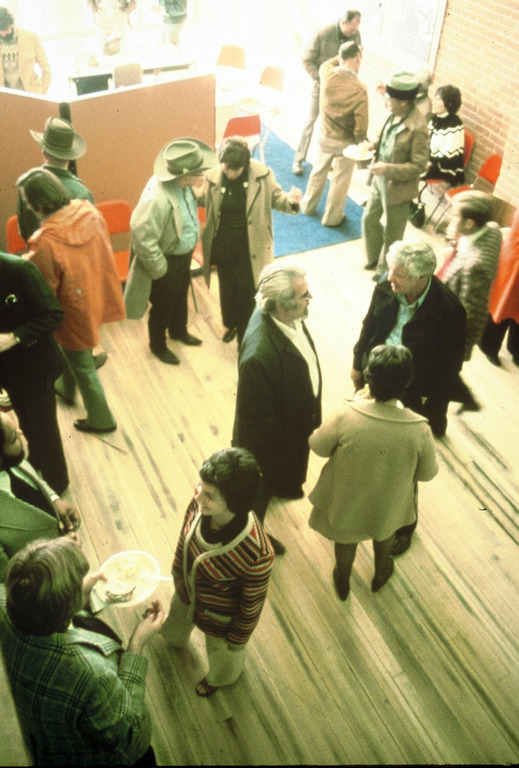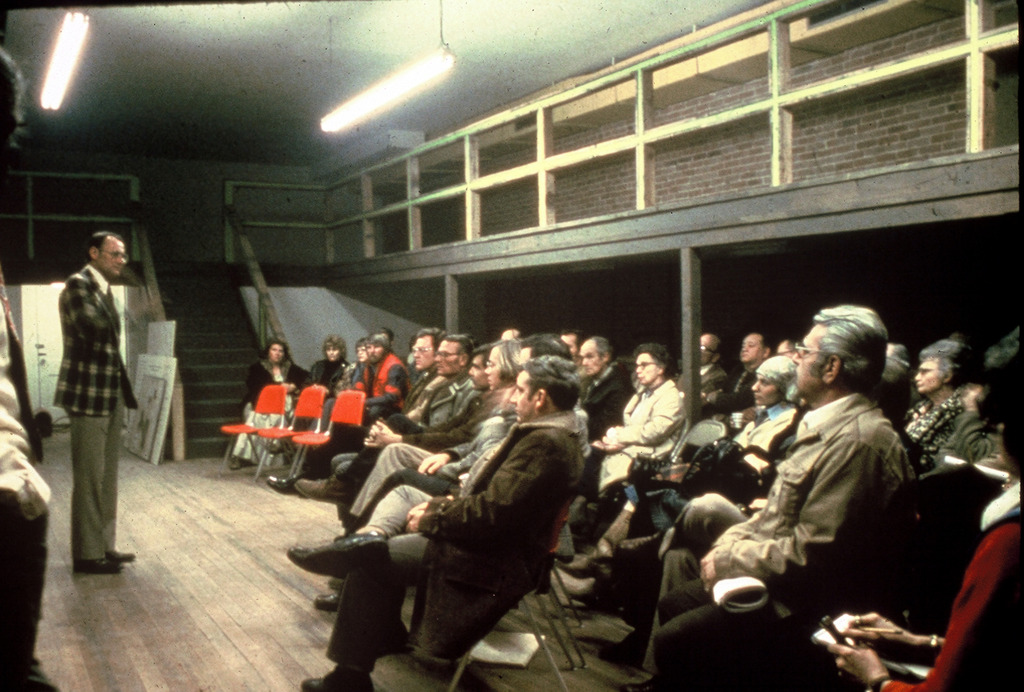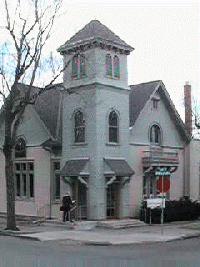- Details
- Written by dave
- Category: Old Colorado City Redevelopment - (1976-1985)
- Hits: 7185
My Role in the Redevelopment of Old Colorado City 1975-1990
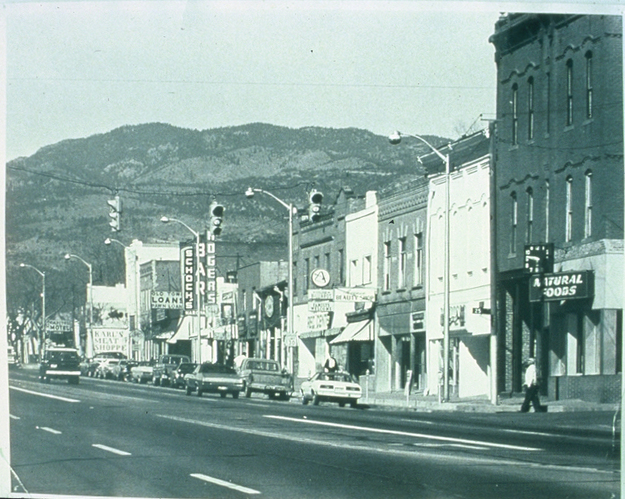 |
 |
| BEFORE West Colo Ave 1975, 50 of 100 Bldgs Empty | AFTER Same scene by 1985 Redeveloped 75% |
The story of why and how the blighted, run down (by 1975) Westside of Colorado Springs got successfully redeveloped - both its core business district and its surrounding 8,000 home residential area - is a long one. Because I have been credited for leading the effort as an unpaid civic volunteer the last 36 years, I was asked in 2007 by the Board of the Old Colorado City Historical Society to write a piece for its West Word newsletter about the story. OCCHS itself is an organization I helped found in 1976 after it was clear that the Pioneer's Museum was not interested in the unique - and separate - 1859-1917 history of the original Colorado City, nor its cowboy frontier, then blue collar, railroad, gold mills, working man's 'Westside' of Colorado Springs 1917-1976.
But the redevelopment of 'Old Colorado City' - with 50 of 100 small commercial buildings between 24th and 28th streets West Colorado Avenue totally empty - required a complex series of initiatives besides my intention to drive the process toward what the area - declared by City Council to be an area of Slum and Blight - that could be redeveloped entirely differently from the downtown Colorado Springs fixation on trying - and largely failing - to land just a few large companies and new buildings. Those initiatives required would be (1) making affordable loans available to compatible small would-be busineses, (2) historical renovation of at least the exterior fronts of the stock of 1890s architecture buildings, (3) streetscape publ ic improvements, (4) selective public use of Federal Block grant, SBA guaranteed business loans, and EDA funds, (5) enhance off street parking, (6) achieve national historic district status, (7) recreate an active small business association, (8) found a new Old Colorado City Historical Society (9) develop public and people space for non-commercial activities, (10) vigerously promote the area with parades, fairs, and entertaining events centered on Bancroft Park, and (11) on the authentic and unique history of the pre-1917 original Colorado City area, and later the gold mill, railroad westside side of Colorado Springs. In short, to turn a municipal sow's ear into a silk purse.
I carried out that role as the Chairman of the Pikes Peak or Bust by '76 Centennial Chairman, volunteer and 1 year paid Director of the West Colorado Springs Commercial Club, member of the Old Colorado City Development Company, Territory Days organizers, founder of Old Colorado City Historical Society and Board member, small business owner, nearby homeover after 1977, a founder of Organization of Westside Neighbors (OWN) and general gadfly from 1975 to 2011.
I have attached here as a PDF file that January, 2007 West Word issue, with several illustrations. Reading that will give you the sequential story of the redevelopment from 1975 up to 2007 and my role in it.
Click on "OUR PAST - OUR PRESENT" story.
After you read the above I here below illustrate many of the changes with photographs.'
How Bad Old Town Was by 1975
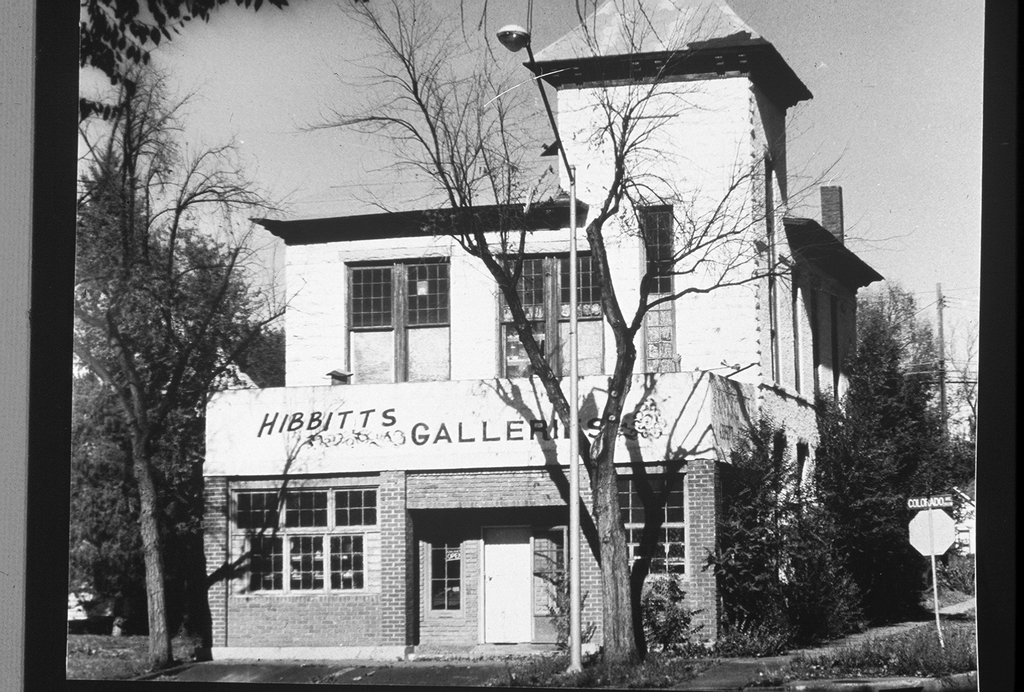 |
 |
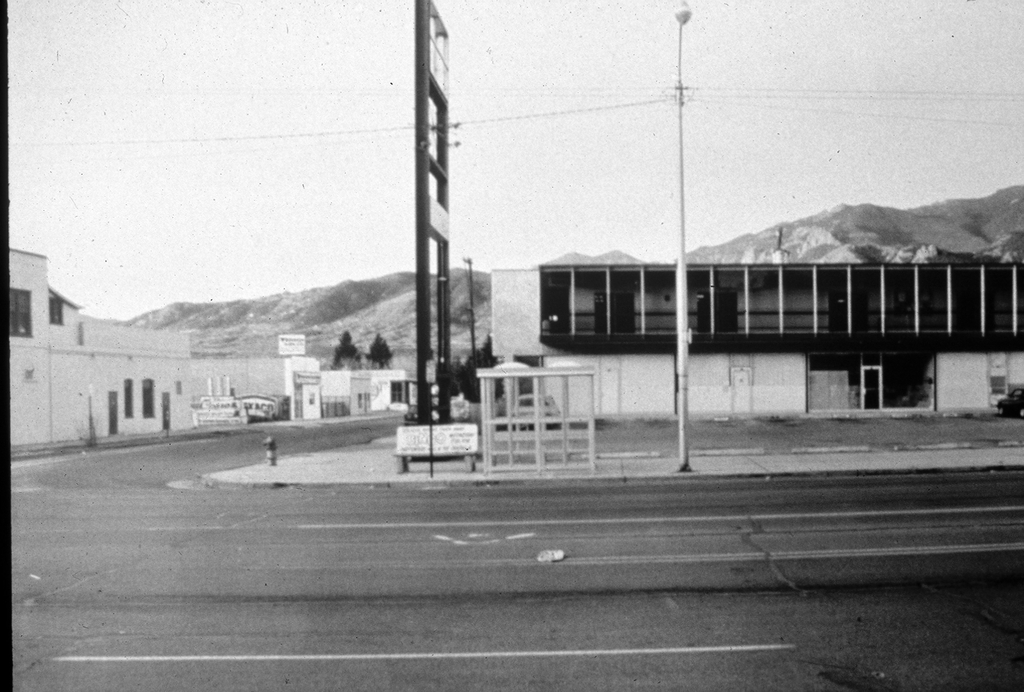 |
| 2902 West Colorado Ave |
South Side 2600 Block |
Failed Shopping Center at 25th |
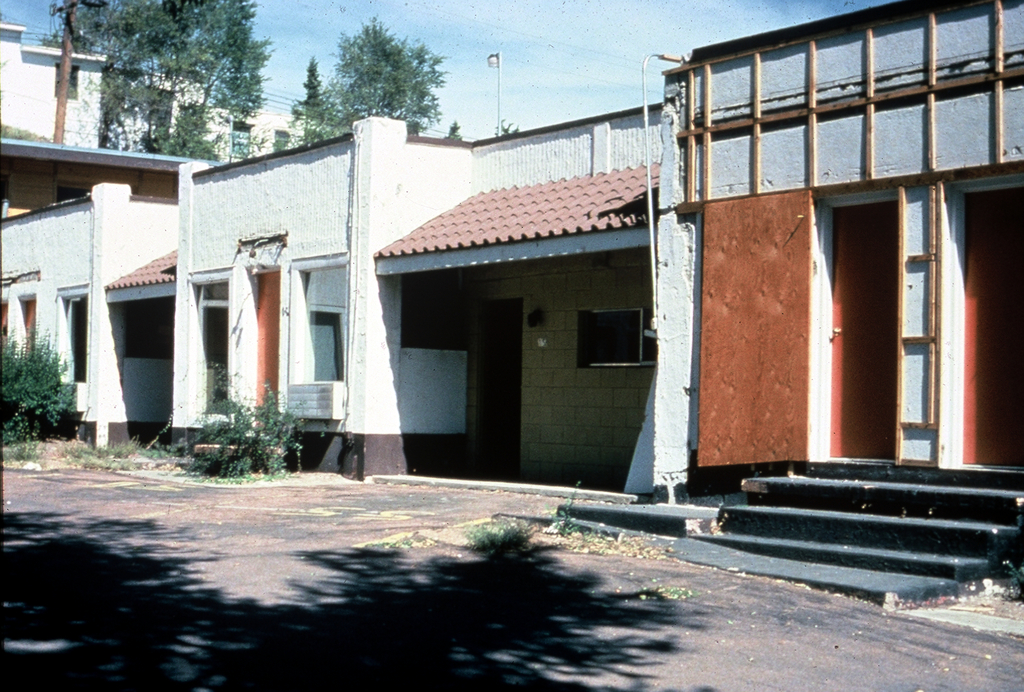 |
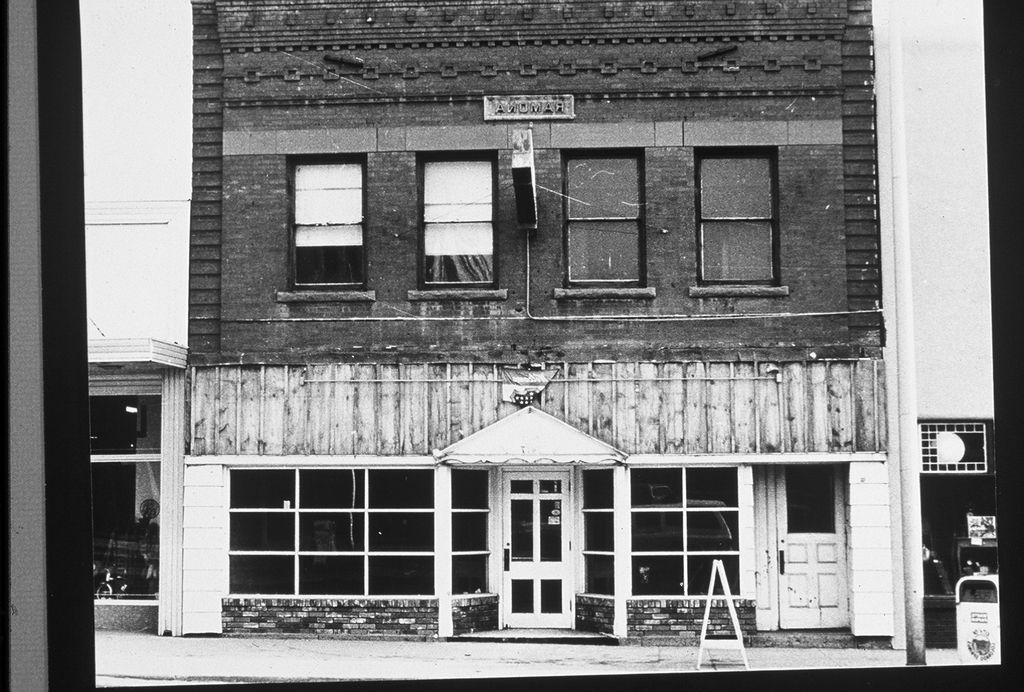 |
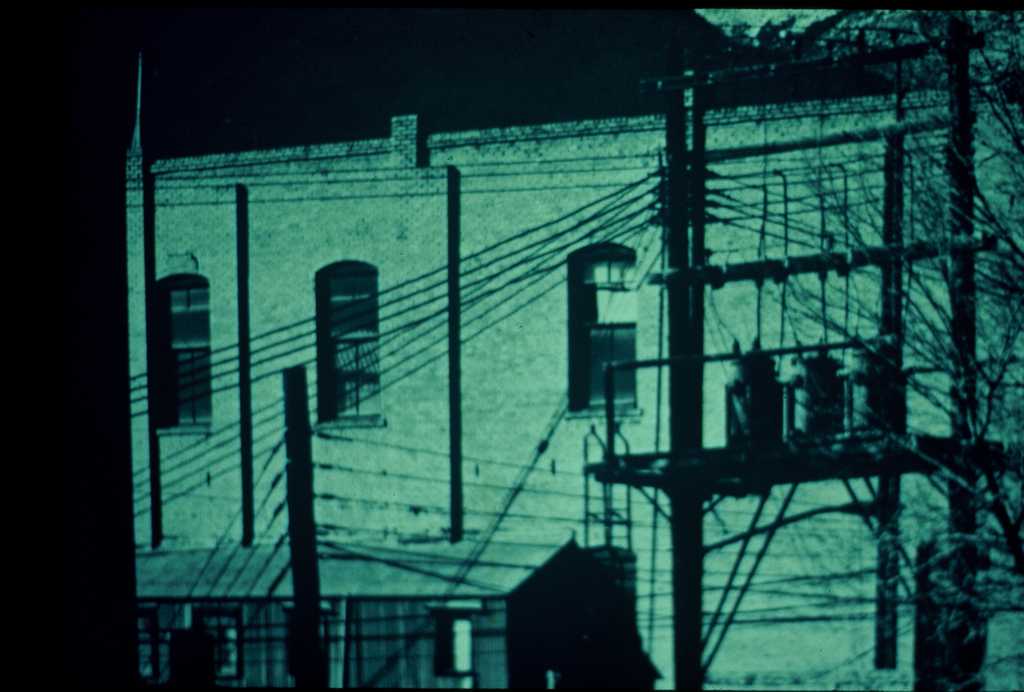 |
| Abandoned Motel after Colorado Avenue ceased being US 24 West. |
One of 50 (out of 100) Empty Retail Store Spaces |
Aged and exposed Utilities, and crumbling city infrastructure |
 |
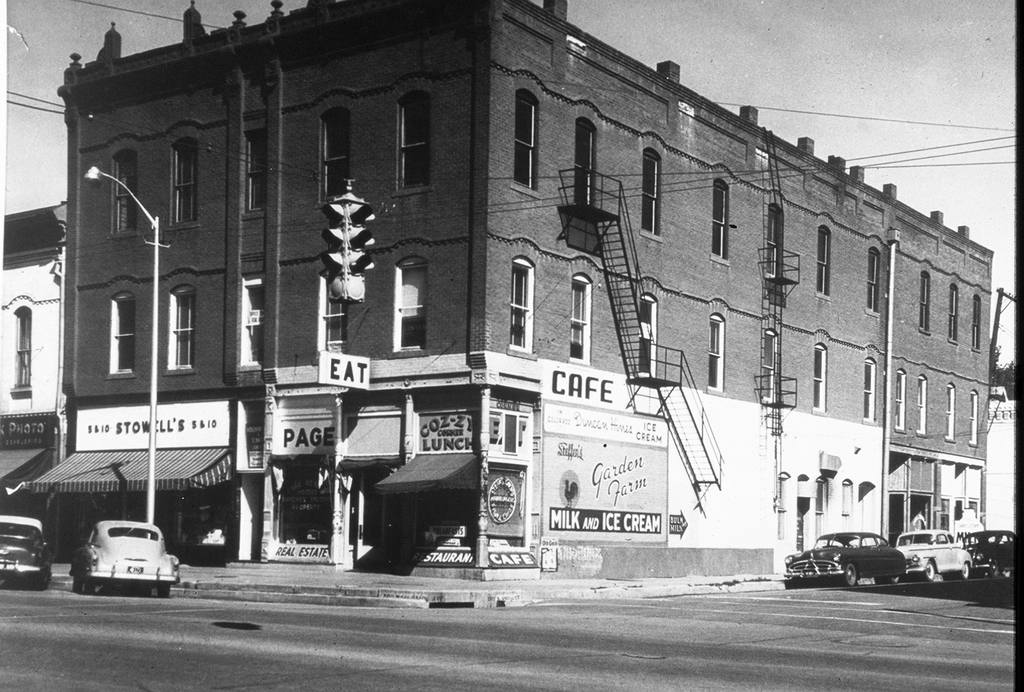 |
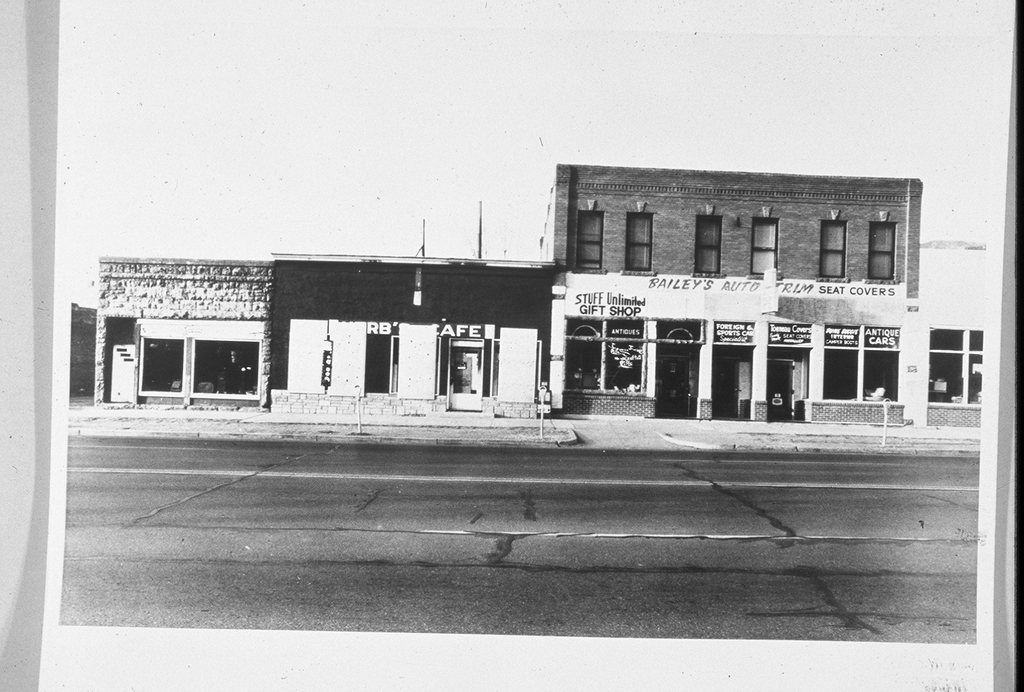 |
|
Slum area Businesses, even small time gambling in the 'Domino's' space |
Largely empty Templeton Block at 2502 West Colorado Before Renovation |
Bailey's Automotive in Retail Building Space where racing Unser family members worked in the 30s |
Lobbying, Planning, Deciding
 |
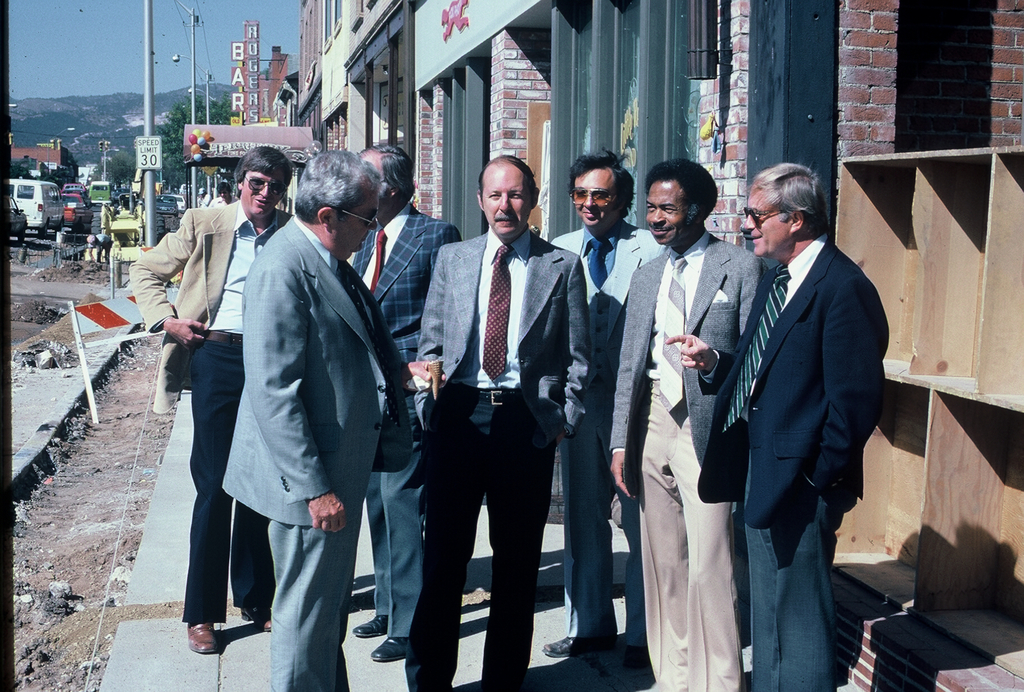 |
 |
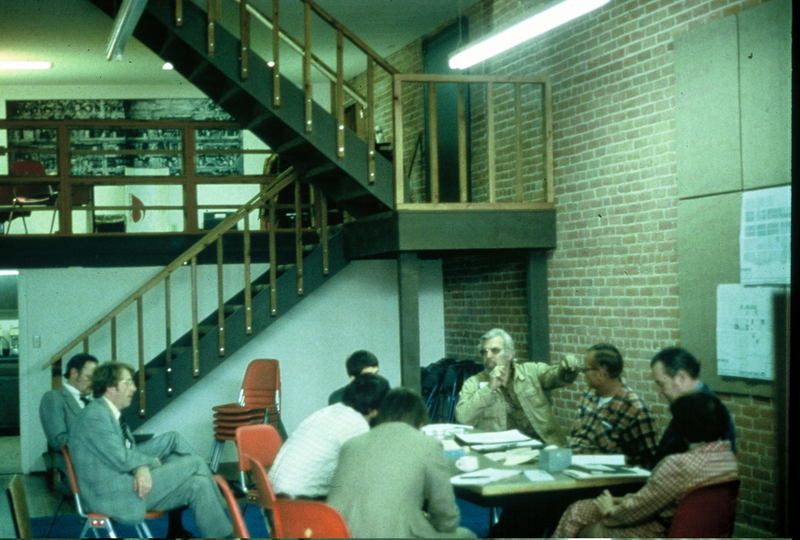 |
|
|
Gene Brent, Business Owner, Mayor Isaac, Councilpersons |
City Staffers - Ringe, Patoni, Contractors, Architects jawbone |
|
West Colorado Springs Commerical Club Board, Norm Clark President. I was director, and took this picture |
Groundbreaking, Heavy and Steady Work
|
Everybody Gets into the Act in front of the new City offices |
Street Changes in front of Brent's Gun Store |
Decorative Paver Stones laying three blocks through heart of 'Old Town' |
Showing First Results by 1979
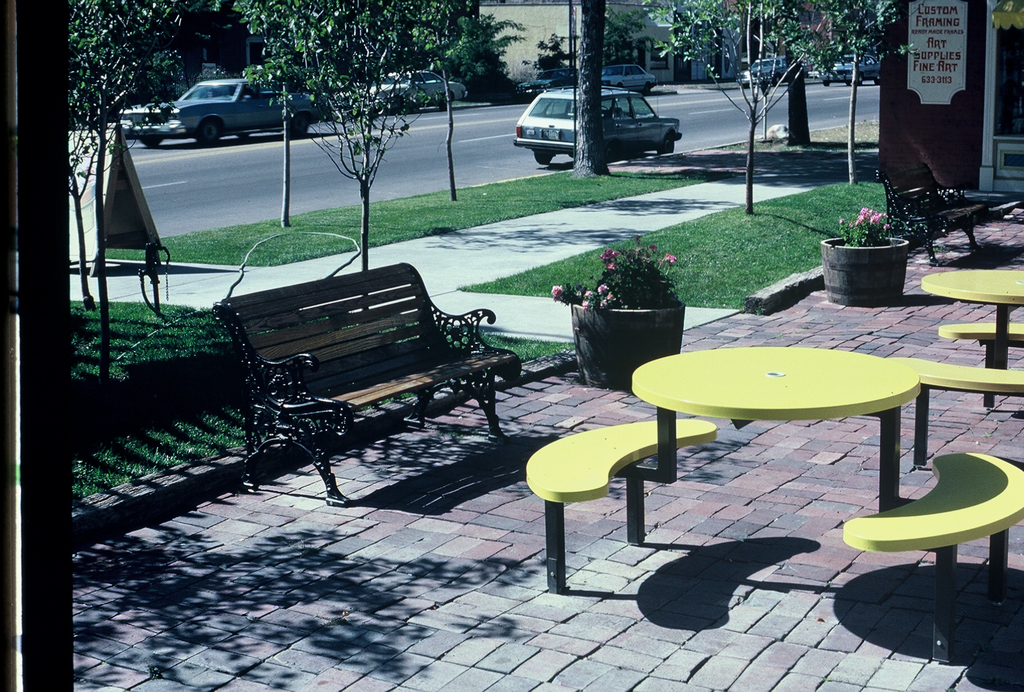 |
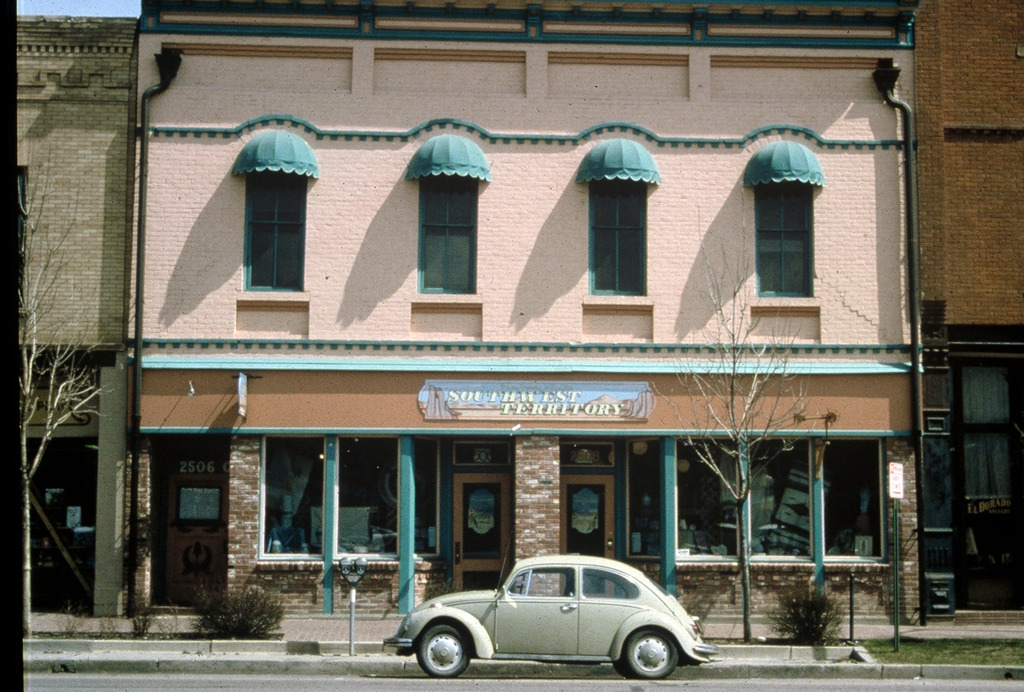 |
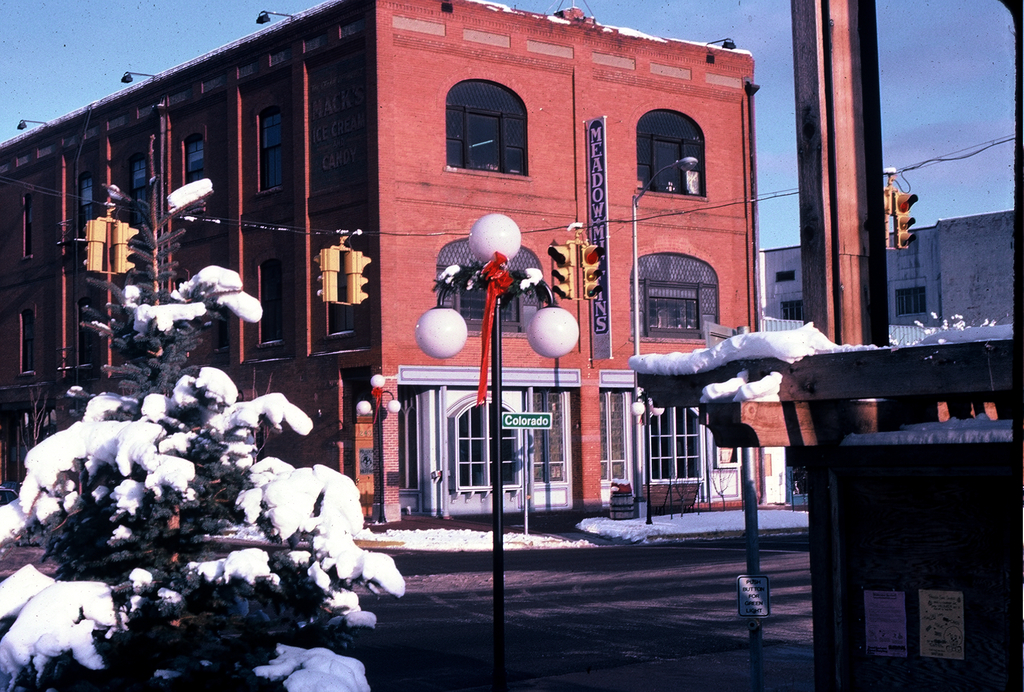 |
| Street Scapes and Grassy Medians with free, (no meters) but controlled parking in back paid for by EDA economic development funds. |
Facade design by Elizabeth Wright Ingram. (Descendant of Frank Lloyd) 2d Floor became small 'Loft Theater' space. |
Original Waycott Opera House, now Meadow Muffins, second floor offices, and top floor pricey condos |
|
|
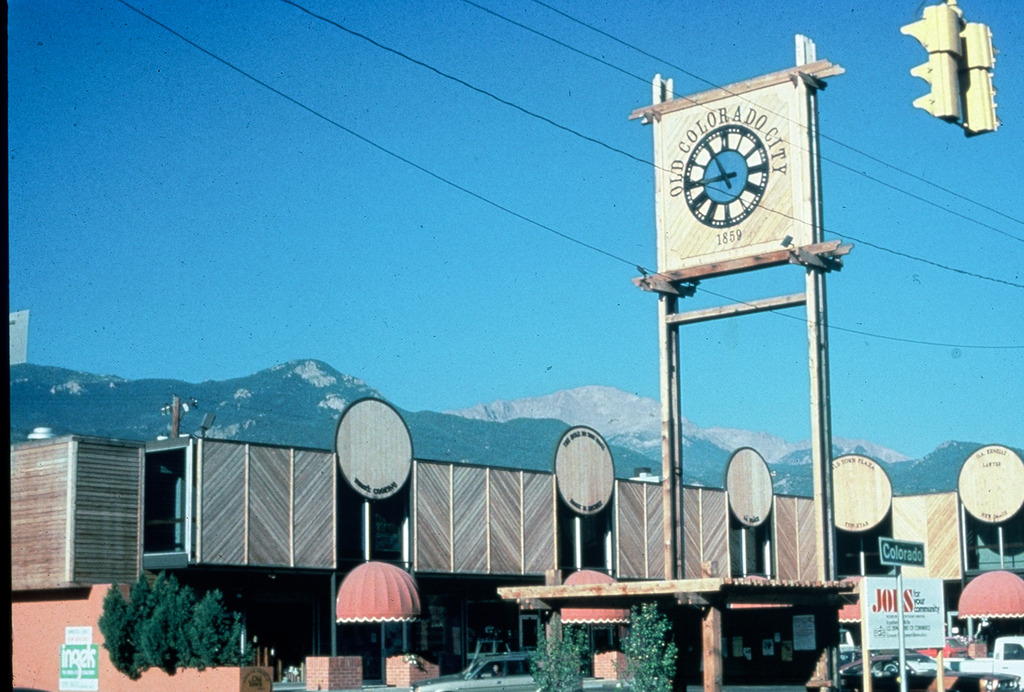 |
 |
| Arati Artists - the First of many art galleries and 'starvin artists' who located in 'Old Town.' Next to it, one of unique, filled in narrow, long, shops. Originally -1880s - 'Horse Alleys. | First Business Condos sold in all Colorado Springs,under decorative Clock Tower |
2d Story Loft Home in original 2d Colorado City Town Hall |
 |
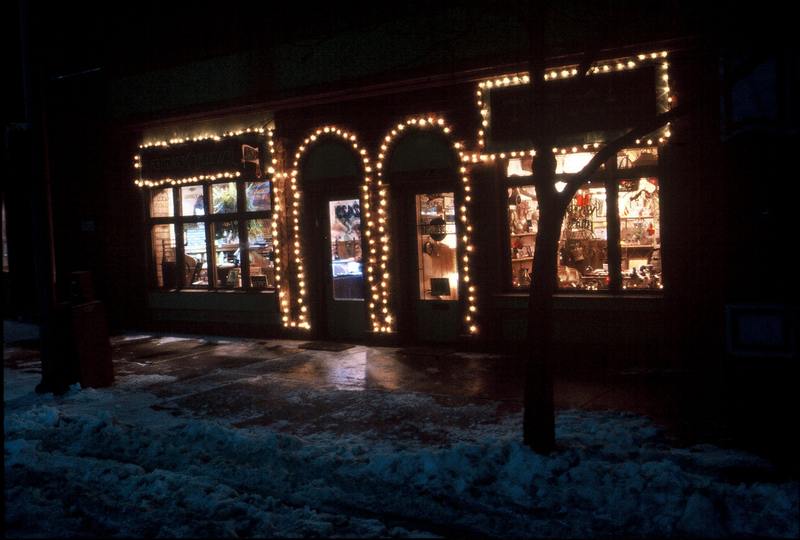 |
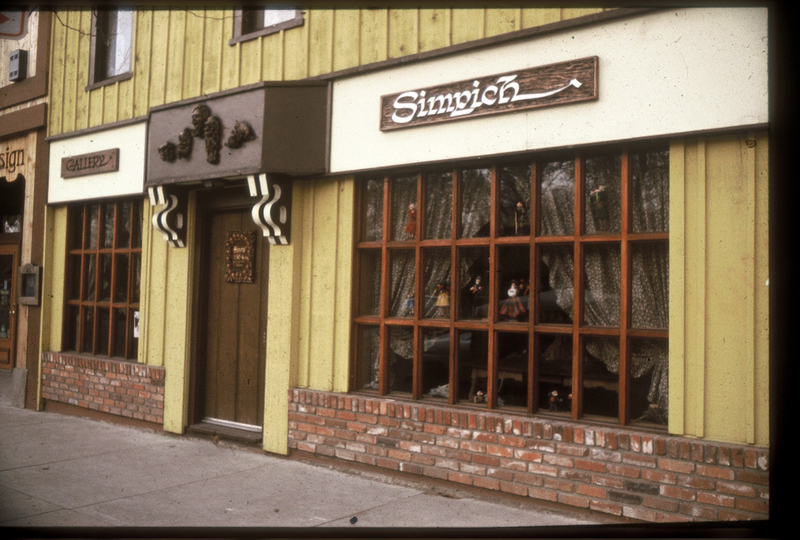 |
| 2902 W Colo Ave totally Remodled - was original first - 1860 - City Hall |
Christmas Lighting appeared on shops first Christmas -1977
Watch a 24 minute narrated Video of a variety of activities during the Christmas Season 2005, in Old Colorado City.
Just click here on Christmas2005inOCC |
Simpich Character Doll factory and sales outlet. High Quality and very popular Art |
1976 Cartoon Map - History by Hughes, Art by Jack Ekstrom
Marketting Old Colorado City History
|
Main Brand Sign. "Old" Colorado City so as not to confuse it with 3 other modern (small) 'Colorado Cites - in Texas, Utah, and Colorado
|
Alaskan champion gold panner and local Uncle Dick Wooton. Held Colorado State Gold Panning Championships 1976-1980. 'Politicians Pan Off' happened in 1980 an Election Year - Governor Lamm running again participated. The theme was "Unless you can find the gold we aint gonna vote for you to spend it."
|
Promoting Colorado City History before the 1859 Garvin Cabin in Bancroft Park. Ex Colorado Springs Mayor Gene McCleary, who grew up one block away, seated. State Legislature being invited (and many came) to the first - of 47 by2014 -'Territory Days' Parade and Festival.
|
|
Publications galore, including weekly insert in Colo Springs Sun - replica of heading of 1861 "Colorado City Journal." I published first modern history of Old Colorado City in 1977.
|
I lobbied the skeptical Council for them to apply, which they did, then I flew to Washington DC to follow up - and so Old Colorado City became the first National Historic District in Colorado Springs - it was actually approved in 1982, not 3. Plaque is in the Horse Alley at 2516 West Colorado Avenue. Gave national recognition - thus promotion - of Old Town. |
Historical Markers placed on many buildings and some installed free standing |
Territory Days - An Enduring Tradition
As early as 1976, when it became clear to me that one major way to put "Old Colorado City" on the City-wide map and into the minds of residents would be to create a unique annual festival, which would springboard off the already coming 1976 Colorado Centennial and national Bi-Centennial
And as the favorable westside and city Press reaction to the first small 'Political' parade down Colorado Avenue showed, that a major parade followed by continued events in Bancroft Park, all happening over the three day Memorial Day Weekend, could start something big.
Over the next 38 years, there has been a 'Territory Days' festival that has reached - according to police - up to 145,000 people attending each year. on the peak Memorial Day Saturday. For 10 years it started with a Parade, then became a 5 block long Street Fair, with vendors coming from all over to participate.
To get a see most all of the Territory Day's activities in 2001, the 29 minute Video Tape below will capture it, from music to Gold Panning.many activities.
Just click on TerritoryDays2001
Parades, Events, Fairs
|
One of the First 'Territory Days' parades 1975. Tax relief passed for improvements of any commercial building in Colorado over 30 years old. |
City, County, State VIPs attended first Territory Days Parade and Park event - on national TV. Thayer Tutt in Front Row. I wrote the Melodrama staged. It was performed in part by my 3 kids |
Territory Days evolved from Memorial Day Parade to 3 day Weekend Street Fair which by 2008 drew 140,000 people. Put Old Colorado City on the map for good.
|
|
Parades throughout the County and Pueblo. With our miniature Cabin on a trailer. Uncle Dick Wooten and my daughter Rebecca on it at the rear. |
Bancroft Park Events - Entertainment, Dances, Musical, Plays, Fiddlers and other Historical Contests |
Educational Events for School Kids near and inside1859 Cabin |
Culture, Art, Donations, Community
|
Indian art appeared in galleries.
|
Community gathering in Park under new Gazebo.
Plaque at foot of Clock Tower in memory of Claire Chambon who built modernistic Plaza trying to revive business area then lost it in foreclosure. Old Colorado City saved it as small business condomuniums with added historic building facade. Dave Hughes, Vice Mayor Young, Vera Chambon
|
Community gathers in City Offices space in Old Town to learn about and debate city plans - and tell it what they want and do not want. I insured there was a high level of citizen participation in the planning and thus final decision on public improvements, from off street parking, to maintainance.
|
|
Old timer Indian from Nursing Home on Westside. Old Colorado City, while gaining upscale shops was NOT permitted to gentrify and drive out long time westsiders or poorer people. The Westside - continuing a long tradition 'took care of its own.'
|
Old Town Businessmen discuss property taxes with Wes Colbrun in city meeting space. |
Old Colorado City Historical Society Center in 1889 Church. $100,000 donated by bachelor westsider Luther McKnight to buy it. |
MEASURE OF PROGRESS
Original Commercial Club (Business Association) Worksheet for the Board as of 1979, only 4 years after start of Redevelopment effort in late 1975. 44 building of the original 50 empty ones sold to owner occupants.
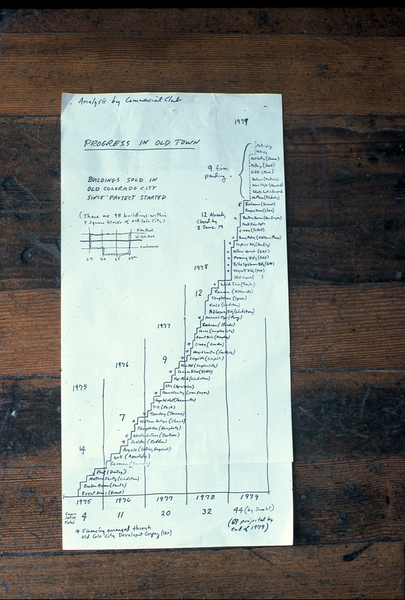
By 1995 Old Colorado City had achieved every city goal - removal of slum and blight, increase of the tax base, increase jobs. And it was achieving all the Citizen goals - a nice place to live and work, public safety, historic preservation of both 'Main Stree America' and traditional residential neighborhoods. And a good place to raise a family.
To go to the OTHER consequences of the Redevelopment, in particular for the greater Westside of Colorado Springs, click on this URL below or go to (N)ext
OLD COLORADO CITY REDEVELOPMENT (2)
- Details
- Written by dave
- Category: Old Colorado City Redevelopment - (1976-1985)
- Hits: 12084
The Maturity of 'Old Colorado City' and the Westside
By 2000 the combined successes of the Revitalization of Old Colorado City and the visible improvements throughout the residential areas of the Westside, which really only started in 1975 were fueling further progress by the actions of the unaided marketplace. There were some notworthy benchmarks.
1. In 1975 there were only 30 viable businesses, employing only 100 persons, half of whom worked in the Snow White industrial laundry, which were retailing $2.5 million, among the 100 buildings between 24th and 27th West Colorado Avenue, half of which - 50 - were empty. By 2000 there were 100 businesses employing 1,000 persons - including service business and offices occupying all the buildings. And retail sales were reaching $20 million.
2. The Old Colorado City Development company made over 50 loans, none of which failed. No building were torn down, Besides having put the 50 empty buildings to profitable use - with all of them initially 'owner occupant.' Several loans were made to upgrade the interior, besides redoing many facades - bringing out the original 1890-1910 architectural details. In fact the payoff in Principal and Interest back to the city through the Development company, reached over $1 million - which the city in turn used to help finance the rehabilitation of the 'Lowell School' project on South Nevada Avenue. And all the loans were not made just inside the 7 square Old Colorado City block area. Since any property from Colorado Avenue back to the Alley on both side of the avenue, being zoned C-5 which meant any building could be all commercial, all residential, or any combination, a number of loans were made all the way from 10th to 31st streets. Which tended to upgrade that avenue with an Historical look.
And I suceeded in getting the City Council to nominate the 7 square block area containing all 100 small-business building for National Historic District Status. Which went through (after I flew to Washington to lobby for it). So in 1982 'Old Colorado City' became the first National Historic District in Colorado Springs.
The small business lending program was so successful that there were requests for the scope of that Development Company to expand its reach throughout all of El Paso and Teller County. It did so, changing its name to 'Pikes Peak Development Company' and it still is operating with a headquarters in downtown Colorado Springs. It no longer depends on either Bloc Grant Funds or SBA Guaranteed loans. It is just successful making small business loans to a variety of applicants.
3. After I got Thayer Tutt of El Pomar to donate $7,590 toward the upgrading of the 1859 Garvin Cabin - which he had saved in 1929 after HIS father's urging, for $400 and put on the Golf Course of the Broadmoor until he gave it to the city in 1961 after it was used in Denver during the 1959 State Centennial, spured the City to put $60,000 to upgrade run down Bancroft Park. That paid for the Gazebo that is here still, a much larger concrete lab in front of the Bandshell, and general landscaping. Bancroft Park became and remains a heavily used public activity center - shows, reenactments, dances, craft fairs, contests, celebration and memorializations.
4. After EDA paid for a number of off-avenue parking lots behind the 100 stores which faced the Avenue, I pursuaded over 50% of all the property owners to petition the city to form an 'Old Colorado City Maintainance and Security Tax District' which enclosed 7 square blocks. Thus permitting those parking lots to be 'free but controlled' without parking meters. The District paid for the maintainance of the lots, and by funding one City Park Department employee, maintainance of the paver stones before the stores, the grassy and landscaped medians, snow removal, power for the decorative street lighting. In other words I had engineered the creation of a self-taxing district that let Old Colorado City operate much like a large shopping mall - who owns its own parking lots - but where the city owns the lots - but the property owners happily pay for keeping them maintained. Wally Totten. property owner, and I actually drafted the ordnance that created the district, and we insured the District had 9 actual property owners on ite 'City Council Advisory Board' to advise the city on what next year's mill levy should be to cover costs. Thus preventing the Parks Department from arbitrarily spending money in the district without answering to the 100 property owners who were paying that special tax. At the time, it was the first 'Security and Maintance' District under state tax district laws in Colorado. It really worked and is still 2015, working, paying for with its occasional surplus, replacement decorative lighting within the Old Colorado City three block tax district, and paying for etched stone markers for the entrance to the shopping district.
Originaly the 'Maintanance' portion of the District had off-duty policemen, paid for by the tax funds, patrolling the three blocks, especially through the alleys at night to both deter and detect attempted burgleries of the stores from the rear. After the first 20 years of such patrolling, the amount of crime, including teen vandalism dropped off - from the general upgrading of the district and its neighborhood ('removal' of the slum and blight') the Maintanance was no longer needed. The funds saved from the District funds were used to enhance the area - by lighting an better signs - all recommended by the District board who as property owners who were paying the tax, and deserved to be heard.
Incidentally, I got the original petition to the City signed by the substantial portion (over 90%) of the property owners by using my original Radio Shack Computer's 'Visicalc' spread sheet to calculate the total 'assessed valuation' per the County Assessors records of the sum of all the buildings within the District Boundaries (7 square blocks), then the estimated annual Maintainance and Security Cost (which was $50,000 the first years), then dividing that by the percentage of value of each taxed property - which then gave me the actual dollar cost per year per property. I printed that out and as I 'solicited' signatures on the petition to Council to create the district I was able to say, for example to the owner of Moccasin Tipi - "For $23.50 a month you can have, behind your store in a 'free for your customers' public lot, and at night have security patrolling, if you just sign that petition"
It was so better a deal than any building owner could do out of his own pocket, all but a few property/busineess owners signed the petition to raise their own taxes - because they could see the direct benefit to their property and business.
5. I worked, of course, with many City Staffers on all these projects over the years it took to turn the westside around. Jim Ringe, Peter Dobert, Bob Patoni, Bill Eberhart, Eric Swab were among them.
6. Other communities - and the State Governor - looked to the success of Old Colorado City as a model - especially for what was nationally dubbed the "Main Street' project. Which was a return nationally, not just to historic preservation, but to Main Street more than Suburbia and its Malls. I was flown in the Governor's Plane - with a number of others who collectively called ourselves the Main Street Group. We both looked at elements towns were doing by themselves - even not nearly as comprehensively as Old Colorado City was doing - and I picked up a number of good ideas and projects to integrate into Old Colorado City. Fort Collins, Boulder, South Denver, Grand Junction, Aurora were some of the places we visited - and told local business-government leaders how our project worked. Later I was asked to advise Florence, and Victor Colorado.
7. Manitou Springs, right next to Old Colorado City (and more than a few stores relocated to Old Colorado City from stagnant Manitou) asked for my help. I helped them become a 'Main Street' city, helped form the Manitou Development Company modeled after the Old Colorado City Development Company - landed both a state economical development grant, served on its Board for several years, and we managed, with the SBA502 program to upgrade several downtown Manitou Springs commercial buildings and kick start its own brand of redevelopment.
8. By 1995 I helped fold out of active existance the West Colorado Springs Commercial Club which had done its work during the main 'redevelopment' years 1976-1990 when no less that 35 of the 100 buildings were purchased, a company formed, and their buildings historically renovated. We were replaced by a new organization "Old Town Merchants" which concentrated on Retail Marketting, and took over the annual Memorial Day Weekend's 'Territory Days' - which, when it became a street fair drew, by 2007 140,000 people. And the largest St Patrick's Day outside of Denver took place in Old Colorado City, drawing everyone from the Lord Mayor of Dublin to the Governor of Colorado. It out grew Old Colorado City and in 2008 relocated to downtown Colorado Springs.
9. By 2010 I was generally out of activities related to Old Colorado City's commercial district. And the Old Colorado City Development Company on Wes Colbrun's retirement and death from cancer, enlarged to the Pikes Peak Development Company, moved downtown, continuing to make business loans, and covered all of El Paso and Teller Counties.
10. It is not too much to say that the redevelopment model I envisioned in 1976 and implemented became a model for many other parts of town, and other towns and cities in Colorado. It remains 'redeveloped' for good
---The End of the Federally (HUD) Financial Support for the Westside in 2014 ---------
Following is an Op Ed piece I wrote for the Westside Pioneer Newspaper after the city cut off HUD funding, September, 2014, for the annual $7,000 to the 'Organization of Westside Neighbors' (OWN) which it had relied on from 1978 when Bob Traer and I started OWN, in order to effectively communication by quarterly printed and mailed newsletter to and from 8,000 Westside homeowners and small businesses who were inside the Redevelopment area.
Guest column: CDBG funding cutback for
Westside is a sign of success
By Dave Hughes
While you, editor, have summarized the controverial cut-off of CDBG funding for OWN now (see Westside Pioneer article), you haven't given Westsiders a fuller explanation of how and why that funding was made in the first place. Let me fill in some blanks.
In the late 1960s, Colorado Springs became the recipient, on application, of a series of annual federal - HUD- “Community Development Block Grant” (CDBG) funds. The Springs, like many cities with deteriorating downtowns or neighborhoods, could use these funds, under Department of Housing and Urban Development (HUD) rules, to start the revitalization of those areas.
 |
City governments first had to declare and map out which run-down parts of town were full of “slum and blight.” The city then made plans on how to bring those areas back. In some cases they declared an “urban renewal” area. Downtown Colorado Springs was so declared. And it used those funds, along with some city funds, to tear down buildings, some historic, lower the price for the land and market it to outside investors.
Downtown is still struggling to recover, economically.
The city then drew a circle around the 8,000 homes on the Westside and the 7 square block area in which 50 business buildings were empty along West Colorado Avenue, declaring it all also a slum and blighted area. For a while, Old Colorado City was declared an urban renewal area too, but we proved to City Council that our own revitalization plan (already in place, combining CDBG funds - SBA loan guarantees, and private loans) was better. The city cancelled the Westside Urban Renewal.project.
But HUD required that the city communicate to all property owners inside NSA's (neighborhood strategy areas and get their opinions on the city plans, especially the planned expenditures of block grant funds. That was easy for the downtown, as well as for the 100-plus commercial properties in the 7 square block area of Old Colorado City.
“Communicating” with the owners of 8,000 households was not going to be easy, for there were no Westside-wide homeowner organizations in the mid '70s. So Bob Traer, a homeowner on the near Westside, and I, who became a homeowner in 1977 - but was putting my energy into the commercial area - formed the Organization of Westside Neighbors in 1978.
Traer became president. The city started funding OWN with block grant funds so we could print and mail a newsletter to inform everyone inside the NSA about community development plans, hold meetings and picnics and solicit feedback. An elected OWN board, including members from six areas of the Westside, would meet, talk to the city, review its plans and represent the 8,000 homeowners. By 1980 the "Westside Plan" was adopted by city ordinance after plenty of Westsider “feedback” to the city planners.
Well, after 36 years of “redevelopment” efforts, 90 percent of which has been done by new and old homeowners and small-business persons by renovation, very little destruction, voluntary historic preservation, plus some public works and loans from annual city CDBG funds, supplemented by regular city budget items, the “Westside Plan” has worked!
Neither HUD nor the city needs to specially subsidize the Westside, Old Colorado City or OWN anymore!
Editor's note: Dave Hughes, a retired Army colonel and Westside resident, is widely credited for leading the revitalization of Old Colorado City and the Westside, starting in the late 1970s.
(Posted 9/28/14; Opinion: Guest Columns
I wrote that OP-ED piece, above, because the President of OWN, Welling Clark, and his wife Sallie Clark - who was a County Commissioner representing the Westside were hard core Republicans. Presumably Conservative. Yet he was complaining about the City not continuing - forever - up to $2.8 million Federal HUD Subsidy. I saw political hypocricy in demanding a continuous flow of government money, even after the original subsidy had largely worked, and I saw that no more handouts were needed. And OWN should start standing on its own, financially.
Column by John Hazelhurst - native, past City Councilman, and the writer as "The Sage" in the 'alternative' City Newspaper - Colorado Springs Independent
Old Colorado City: a downtown that works
City Sage
by John Hazlehurst
Stability and unity abound along West Colorado Avenue.
March 3d, 2016
It's 7:45 on an unseasonably warm Saturday morning. I'm walking my dog through Old Colorado City. Most of the stores are closed, but the 120-year-old commercial district is coming to life.
At Jives, a coffee shop facing Bancroft Park, a half-dozen customers enjoy the early sun. Across the street, La Baguette does a brisk business. Two blocks farther to the west, the second wave has already hit Bon Ton's Café, the west side's iconic breakfast spot, which has been open since 6.
By early afternoon, the good weather brings out dozens of strollers, potential customers for the merchants along Colorado Avenue and the side streets. The merchants are wildly diverse, an Alice's Restaurant of retail.
Want some sexy lingerie, a tattoo, a jade horse, a cool little top, a 21.7-carat aquamarine set in diamonds and gold, a bankruptcy lawyer, a painting, a margarita, the opportunity to make a fool out of yourself singing karaoke, a bed for the night at one of the state's finest B&Bs, gluten-free tapas, or a simple scoop of ice cream?
It's all here.
Thirty-five years ago, Colorado City was dying. The 19th-century brick commercial buildings that lined Colorado Avenue were mostly vacant and crumbling. The few businesses that remained (the much-mourned Roger's Bar among them) serviced a strictly local clientele.
According to longtime activist Dave Hughes, city bigwigs even floated a plan to tear down all the existing buildings and offer the vacant ground to a manufacturing company, which would then create jobs for all of us unemployed west-siders.
Happily, that didn't happen. Working in tandem with city officials, local businesses and property owners, Hughes conceived and implemented a plan that led to the preservation, renovation and revival of this extraordinary area. It's a story that has been told — but now it's time to ask a simple question.
Why does Old Colorado City thrive, while downtown Colorado Springs struggles? What lessons can downtown merchants and property owners learn from their counterparts two miles to the west?
"I'm always wondering what we can learn from downtown," says Laura Teeters, who owns A Call to Life, a women's clothing boutique at 25th Street and Colorado. "I never thought that we had anything to teach them. But I love being here — this is such a supportive business community. I get so many customers that other business owners refer to me, and I refer my customers to them."
Silversmith Mike Velez occupied a prime Tejon Street location for 20 years before moving to "the avenue" two years ago. He echoes Teeters' comments.
"It's great here," he says. "It's just a lot of people who are really dedicated to small retailers, and making this work for all of us."
Commercial real estate broker and gadfly City Councilor Tim Leigh takes a slightly different tack.
"They've got a great tenant mix," he says, "lots of storefronts, small, shallow spaces. Downtown has a problem because so many spaces are too big, too deep. Small retailers can't afford the dead space, so they go out to Colorado City, or Manitou. And the more retailers you have, the more foot traffic, the more sales, and everybody benefits."
Also, Leigh continues, it's not so much what Old Colorado City has that's important — it's what it doesn't have.
"There aren't any panhandlers there — or at least there's no perception that they're working the street every day. It's considered safe at night, and parking is easy. Not like downtown. I get panhandled every day, and I get a parking ticket at least once a week. Twenty bucks! You've got the bars and restaurants, but they don't overwhelm the area."
The parking meters that so bedevil Leigh downtown line Colorado Avenue as well, but there's a difference. They're at least two-hour meters, and free parking is readily available on side streets and in lots behind the buildings. Plus, there are no gaping parking lots in the heart of the shopping district.
Here's another whimsical touch: For whatever reason, there are no chain retailers in the historic core of Colorado City. No Starbucks, no McDonald's, no KFC. You have to leave the historic district and drive to 30th Street to satisfy your fast-food jones. Locally owned businesses dominate the avenue.
And in every building, history is alive and present.
"This space [in the 1891 Templeton Building] used to be a gentleman's club in 1895," says Teeters. "Here's a copy of the newspaper article about the club, which had gilded chandeliers, a bar, a dining room — all the amenities. Up on the third floor, the Knights of Pythias had their meeting hall — and look, here's a piece of club stationery we found in the basement."
Teeters turned the building's long history to commercial advantage a few months ago, hosting a well-attended event featuring investigators of the paranormal. Did they find any ghosts?
"Oh, it was so interesting..." she starts — but she never finishes, interrupted by customers.
A block to the west, we squeeze into local artist Laura Reilly's just-opened gallery. It's a tiny space, one that was originally a horse alley.
"I'd been thinking about just renting a place for a few days," she says, "but then I saw this space and I said, 'Yes — this is a gallery!'"
Time for a cupcake? Sorry, too late ... next door at Mya Bella's, there's a cheerful sign on the door: "All out of cupcakes — see you Tuesday!"
Final stop: All that Glitters, to look at that 21.7-carat aquamarine pendant. It's magnificent, and unaffordable. But maybe the local bank on the corner would make us a loan...
— This email address is being protected from spambots. You need JavaScript enabled to view it.
Go onto the Related Old Colorado City Historical Society
- Details
- Written by dave
- Category: Old Colorado City Redevelopment - (1976-1985)
- Hits: 3687
Other Consequences of Redevelopment
As I mentioned in the previous summary of my involvement in the Old Colorado City Commercial area, the entire Westside had been, by 1975 declared a city area of Slum and Blight.
I heard this one day when I sat in after being invited as the Chairman of the Centennial-Bicentennial Committee to a Human Relations Commission meeting. Jim Ringe, head of the City's 'Community Development' department made a presentation just before mine. I heard him say that the city was discussing the possibility of putting $250,000 in Bloc Grant funds into the depressed "Westside." I already knew, from the approaches by Luther McKnight and Leroy Ellinwood to my Centennial Committee to see if we could do 'something for Old Town' they were only thinking about doing something 'historical.'
So I looked up the 1970 Census for the tracts on the Westside (which had about 800 homes and small business structures with about 18,000 people. I saw that its average income was only 2/3ds the rest of the city. It was in decline. As I later learned, in part because its central artery - Colorado Avenue - having been US 24 West from the day it was founded in 1859 - it had been the ONLY way to and from the Mountains up and down Ute Pass. The City asked the State to switch US 24 to the 'Midland Expressway' - the old Midland Railroad bed the other side of Fountain Creek, effectively bypassing the Westside and its only opportunity for Tourist business. But I knew from Ellinwood and McKnight it had history under the grime and blight- lots of Frontier history. Now the City was apparently willing to put some HUD Block Grant money into its blighted area, that the city itself helped create - by getting the state to move US24, away from it by 1963.
1+1+1 equaled 3 for my money, so I glimpsed a fleeting opportunity to get involved by linking the westside's need for economic - not just welfare - development, the desire by people - getting away from Big City, Big Business, Big Government - coming to Colorado Springs to find business opportunity in a smaller city, and the kind of entrepreneurship that Nasbit's 'Megatrends' predicted would be coming in the wake of big changes - the '60s, and latent history - architectural as well as narrative. And money available to make it happen synergistically. In my mind's eye I saw opportunity, not decline.
Once again my chronic 'futures' mind, my mental aggregating ability, my Celtic imagination, all kicked in. I saw a new future out of the past for a whole side of town - that might value history when greater Colorado Springs had already shown it not only ignored its own, but destroyed what little there was left. But I also knew I would have to lead the way - charge the hill just as I did in Korea.
The city had already started to declare and boundary - as the 'Westside Strategy Area - the area astride Colorado Avenue embracing 8,000 homes and over 20,000 residents. Within those boundaries according to HUD rules the neighborhoods were eligible for the expenditure of Bloc Grant Funds. The map below shows the larger boundary, the small commercial area, and then something called the Westside Study Area. Which I will explain below.
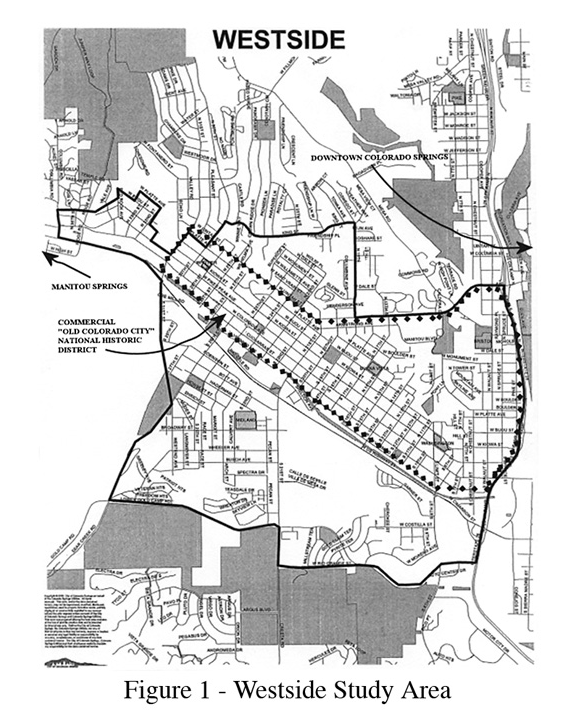
The dark black line is the overall Westside Strategy Area, where HUD programs could be used. The smaller Westside Study Area containing most of the 1880s to 1900s homes which were proposed later to the City to be photographed and studied to become a local City 'Historic Overlay Zone'.
When the city declared the total area a HUD Westside Strategy Area making it eligible for Bloc Grant funds for housing rehab, economic development (which was aimed at the Colorado Avenue commercial corridor) and infrastructure upgrading (curbs, gutters, sidewalks and other things) it was required by HUD to prove it had consulted with the neighbors who would be affected by any changes. The City needed an organized way to do that over such a large area with over 20,000 'neighbors'.
So I helped launch the Organization of Westside Neighbors (OWN) in 1978, and persuaded a 'community' oriented man - Bob Traer - to become its first President. He was a Lutheran Church administrator (he later became president of the largest School District - 11 - in Colorado Springs and owned a home in the 800 Block of Kiowa.) I was eligible to head OWN up myself being, since 1977, a homeowner on the Westside, but since I was focused on getting the 'Old Colorado City' commercial district viable, I only agreed to become a Board Member. (twice later, I was willing also to be its Treasurer).
OWN became THE most consulted - by the city - for all government matters inside the Strategy Area. Its members were elected from westside homeowners or residents. Some were elected At Large, others from smaller OWN neighborhood 'Districts.' It never was a fund raising, large project, organization nor with offices - for its Board simply met in city or school facilities. It was really just an 'advisory' - to city government - neighborhood organization. But it had a budget, for the City, using Bloc Grant funds 'contracted' with OWN to write and distribute a non-profit newspaper 'Westside Story' which contained announcements by the city desiring to get feedback on its rehab plans. OWN wrote its own 'neighborhood' news, announced decisions and recommendations it had made especially on matters brought to it by the city on proposed projects. It could sell ads and get a little income. But its bread and butter was the annual Contract with the City, for about $8,000 a year so it could print the 4 page paper, and have it mailed into the mailboxes of all 8,000 homes and 800 businesses at least quarterly. And in its required HUD feedback reports - OWN advised the city of problems that it could address. The City was always careful to get the 'opinion' of OWN - and hopefully its endorsement, of city planner proposed changes on the westside - from road realignments to rezoning actions. Which endorsement it would always state to the Planning Commission and City Council when the Staff was on their agenda, especially on controversial issues.
The Neighborhood Housing Project - NHS
In the mid 1980s a national organization called the NHS came to Colorado Springs to see if there was any interest in using its services to help rehabilitate run down housing areas. It had been successful in cities like Pueblo, getting Savings and Loan Banks (S&L)or other organizations to put up some funds, to make housing improvement, or purchase loans at favorable rates - all to upgrade depressed housing areas in central cities.
There was little interest in the tight fisted financial organizations of Colorado Springs in such a program. But I suggested through OWN that the same formula I had used to capitalize business in the Old Colorado City - use Bloc Grant funds as the 'seed' or underlying loan for a home with a Second Mortgage to entice Banks or S&Ls to make the balance of the Loan for rehab or to entice purchase by moderate income people (not the poor - or affluent). Since all the homes inside the Neighborhood Strategy Area were eligible for Bloc Grant funds, that might work there. Low interest Bloc Grant Loan plus affordable bank loans extended to moderate income people to move to the Westside and increase home ownership, while improving their properties - including by retaining the historical architectural look of the home that would increase their property values and thus help generally upgrade the 'blighted' part of town.
It did. The model I had created for funding the redevelopment of the commercial district - Old Colorado City - and the rest of Colorado Avenue from 8th Street to 32d Streets - worked for scores of westsiders and would-be westsiders. Block grant + bank loans for extensive rehab work on existing homes or purchase of other homes. That NHS project added to the City's own programs for improving the homes of very low income - generally older - westsiders worked for a few years. The combination helped one other thing to happened too. As Colorado Springs grew, the 'in thing' for those who were not keen to live in typical tract, or new subdivisions, was to buy an 1890's westside home and either fix it up or enhance its original architectural appeal. Historic preservation started coming to the one-time blighted residential area. The marketplace began to work on its own.
During that period I got involved with a dispute with City staffers when they were engaged in upgrading really run down homes using HUD programs that were essentially aimed at doing JUST essential work - like shoring up house foundations, plumbing, electrical, siding or roofs - for low income owners. Several westside home which, in their 1880-90s time were well designed and had many attractive historical features, were owned by people on very low income. One particular home, once named The 1884 Husted House was owned and occupied by a truck driver and his family. You could see its faded glory. It was in bad shape.
I asked the City staff, not only to do the essential safety and building code work on it but to do so on the exterior in a way that brought out by restoration its historical value.
There was an uproar, and the city staff argued ALL they were supposed to do it make the house habitable, not to preserve its architecture.
We went to the mat, and the City Manager, knowing how much I, through OWN and Old Colorado City had greatly increased the value of the properties by restoring its historical look and feel, ruled against his staff. The Husted House was repaired and its historical trim and decorative iron fence were put back in attractive shape.
In fact, the owners were able soon after to sell that home at a good price, the second owners enhanced it further, turned it into an elegant Bed and Breakfast, and its value continued to go up, until it is now an showpiece. Who said historic preservation is not for the 'poor?' Several other properties were similarly improved. This is an original photo of the Husted House - which design details have been restored today.

|
The westside had thousands of less ornate, but nevertheless houses with a 'period' look, that became more and more attractive to young people looking for their first - and affordable - home. In some ways the house we moved into from the totally 'modern' eastside of the Colorado Springs was typical. Here is Jack Ekstrom's rendition of it in 1978. |
 |
| 6 North 24th Street, and its accompanying 'Cottage' at 6 1/2 North 24th Street |
While looking for a westside house to move into - partly to put my 'redevelopment money where my mouth was' - invest in the westside and not just lecture in, we found this 1900 'Georgian Revival' house, with an 1884 'Cottage' in the rear. The original owner's wife had the 'cottage' as a tack-house - two stories - which could house her horse and carriage. Years later when horses were passe, two rooms - kitchen and bath - were added on it and it became a rental cottage - or often called a 'mother-in-law' cottage with partial addresses ( 6 1/2) scattered throughout the westside.
While I was warned, given my background and status in life as a retired West Point Colonel who had once lived in a mansion on Wood Avenue on 'millionaire's row' not to move into the 'run down' westside.
But I took the plunge, and we bought the entire property in 1977 for $31,000. By the time it was paid off , the County Assessor valued it at $207,000. After the realestate crash of 2008, it came down to just about $200,000. Not a bad gamble, not on just the house but the effect of the broad, westside, 'redevelopment.' Its value rise, without really extensive upgrading or remodling, mirrored thousands of other homes west of Interstate 25 and east of Manitou Springs.
And for next 35 years our family life, raising 3 children (two of them prefering to live in the 'cottage' for a time before they all left Colorado Springs, got married, and came back, all three of them buying 'Westside Houses' and raising our 5 grandchildren, and 4 great grandchildren - all within 2 miles of our house.
So life on the 'Westside' harkened back to the days in America when houses had character, much was done by walking, and families sat on the porch.
 |
| Left to right - grandson Justin, son David, grandson David XIII, Edward - Justin and David's father - and my son in law Tom Palmedo. All on our 'porch' |
The Historic Overlay Zone Project
So OWN undertook in the mid 1990s from the prodding by a number of Westside newcomers - mostly women - who generally had lived in other cities with historic residential areas, to become involved to accelerate the 'historic preservation' process.
That gave rise inside OWN to what became a 5 year effort to start a major project.
I was quite familiar with what the city had done over the years elsewhere for residential Historic Preservation - all of which was inside the original Colorado Springs city limits. And almost solely from the initiative of residents - not from any city leader's 'vision.' In fact the City of Colorado Springs was disinterested in Historic Preservation not already undertaken by the wealthy. There was exactly 1 city staff officer - Tim Scanlon - in the City Planning Department, who provided staff support to the city appointed Historic Preservation Commission - in addition to his other planning duties. And there was an Historic Preservation Ordnance.
There were two residential 'Historic Overlay Zones' in the city - the Old North End, and the Weber-Wasatch areas.
Westsiders who wanted the city to create a Westside Overlay Zone had a number of obstacles to contend with. Not the least of which was the fact that when the 'Old North End' - which included the mansions on Wood Avenue, and Cascade around Colorado College' applied for City Overlay Zone status there was a huge public controversy, and at least one law suit against the city against it.
The problem was that those who promoted the North End Historic Overlay Zone, had already gotten the 657 homes inside the area, designated as a National Historic District.
Under both the City Ordnance for Historic Preservation, and corresponding State and Federal guidelines, IF a local Historic Overlay Zone ALREADY had Federal Historic Status, then the City had the power (and obligation) - through the Historic Preservation Board - besides the usual City Building Codes - to dictate to any home owner what could or could not be altered on the exterior of the structure. Which in 'conservative' Colorado Springs became a contentious 'Property Rights Issue.'
But when I studied the fine print in the City Preservation Ordnance, it specified that if an Historic Overlay Zone was created by the city over homes which did NOT have Federal status, then the only thing that the Preservation Board could do is review the building permit, and jaw-bone the owner to persuade him or her to do the things that would preserve the historical architectural 'look' of the building. But it had no power to dictate exterior changes.
ONLY because that meant that a Westside Overlay Zone over residences would have no property rights implications, I supported the proposed Overlay Zone. And I correctly judged that there would be no outcry among westsiders about the added historical overlay designation, since any owner could remodel their homes with only the City Building Codes to limit them.
For I ALSO knew that we had already established the increased value of homes on thean westside which had 'historical' architectural charm, and if we brought out printed 'Design Guidelines' - many a homeowner or buyer would enhance the historical look of their homes on their own. Design guidelines could be a 'how to' book for homeowners who as often as not had carpenter-handy relatives do work on their homes - not retaining high end architectural firms.
The Proposed Overlay Zone Photographic Project
Now what had to be done inside the proposed Overlay Zone - which is shown in dotted lines inside the Neighborhood Strategy Area map above - for the 4,000 structures, was a photograph - front building view - of every building. That would cost money. The city would not fund it.
So I found - in 2005 - a good photographer willing to take all 4,000 digital photos for $1.00 each. Total cost $4,000. Since OWN did not have that kind of money, but could provide up to $2,000 from its bank account that had paid ads in its 'Westside Story' newsletter, I went to the Old Colorado City Historical Society Board and asked it to contribute $2,000 toward the project. I was both OWN's and OCCHS Treasurer at the time. So I knew what each could and could not, do.
The only stipulation was that, when the OWN and the City were done using the 4,000 front-house-view photos for the purpose of creating the Historical Overlay Zone, that the ownership and copyrights of all the photos belonged to OCCHS. OCCHS could use the photos to raise funds from homeowners who wanted a picture of their house, among other things.
That was agreed to, so I contracted with the Photographer and over several months time all the digital photographs, in high resolution, were accomplished.
But there were several other steps which had to be taken. To get an Historic Overlay Zone approved, especially if OWN expected - and the City Needed - to apply for a grant from the State Historical Fund (which came from Cripple Creek and Central City-Blackhawk gambling state taxes), a set of 'Design Guidelines' had to be drafted by an accomplished architect-designer with historical design experience.
Funding the Design Guidelines
I had discussed the possibility with Tim Scanlon at the City, but he and his boss were skeptical, with city funds getting tight, that the city would put up the 25% match of whatever the total grant from the state would need to be. The total cost, even if the City Printing press did the work at cost, for perhaps 3,000 copies given out free to interested Westside homeowners would approach $40,000. One fourth of which needed for the match would be $10,000.
But I had an idea - and I went before the City Council to request funding on behalf of OWN for the Design Guidelines - which would be, besides the photos, a prerequisite before the City would ever approve an Historic Overlay Zone over 4,000 homes.
Two things happened. First of all the Mayor objected to the whole idea of the city enacting another (besides the Old North End) Historical Overlay Zone - given the controversy over the first one (which he voted against when it came to the Council). I anticipated the 'property rights' issue. So I gave the Mayor a short course on his own City Ordinance that (1) proved there would be NO Property Rights infringed upon for the Westside and (2) there had been NO opposition to the idea by westsiders because we had educated them all over at least 3 issue of "Westside Story' newsletter which went to every household. He did not know the implications of the City Ordnance as well as I did. So he consented.
Then I sprung the idea on them that they could take the money from the Fund built up from the fees collected when homeowners came to the Historic Preservation Board to apply for a State 20% Income Tax Credit for over $5,000 of historic preservation improvements to their house. Northenders were quick to get such a tax break so long as their home was in the overlay zone, and the improvements were approved by the Historic Preservation Board.
That did it. The City Council agreed after the staff had to admit it had that 'fee' fund set aside. That could be tapped to provide the 25% 'Match' of the requested state grant.
The grant was approved, and it took months of wrangling between Tim Scanlon, the State, and some OWN Board members (everyone thought they were an 'expert' in historic preservation) before the grant was approved, the city contracted with an architect, and the Design Guidelines were published.
Meanwhile, with other fish to fry, I resigned from the OWN Board and let them carry on toward an Historic Overlay project.
So the 127 page Westside Design Guidelines were done and printed, and free distributed.
For I had another hunch - that EVEN if the 'Overlay Zone never got implemented, the Design Guidelines is an excellent source for homeowners, buyers, and their architects to make their house, or its remodeling, add to, and not detract from, the historic character of the Westside.
I had done my duty in finding a way that the rest of the historic Westside of Colorado Springs was put on the path of restoring its historic character, as I had done for the Commercial area of "Old Colorado City."
One way I used to 'educate' the rest of Colorado Springs on the History of Old Colorado City was to use a unique feature of the Gazette Telegraph Newspaper called "Fresh Ink" where subscribers could write their OWN stories and weekly see the 'User Publishing" print those stories. One early Fresh Ink rant I made that was also responded to by an other paper subscriber, here it is as my first Fresh Ink offering. It is a PDF file. Just click on the title below:
To follow the Maturity of the Redevelopment Phase click on the below URL
